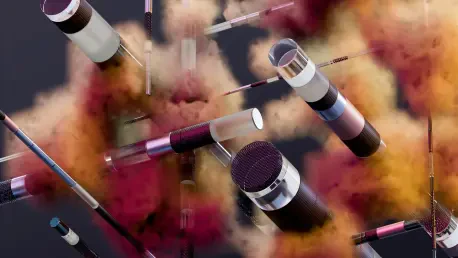Imagine a bustling hospital emergency room where every second counts, and a radiologist is tasked with quickly identifying fractures in a flood of X-ray images from patients with varying injuries, making the integration of artificial intelligence a potential game-changer. In such high-pressure environments, AI promises faster and more consistent diagnoses. Recent research has put this potential to the test by evaluating three commercially available AI tools designed to detect fractures in X-ray images. These tools aim to support medical professionals by enhancing diagnostic accuracy, particularly in routine cases. However, as the complexity of injuries increases, questions arise about whether these technologies can truly keep pace with the demands of real-world clinical settings. This exploration delves into their performance, uncovering both the strengths that make them valuable and the limitations that caution against over-reliance.
Evaluating AI Performance in Clinical Settings
Unpacking Diagnostic Accuracy Across Models
The study focused on a comprehensive comparison of three AI tools—BoneView, Rayvolve, and RBFracture—assessing their ability to identify fractures in X-ray images from over 1,000 adult patients across various anatomical regions. With fractures present in nearly 30% of the cases, including a mix of acute and multiple injuries, the evaluation provided a robust test of real-world applicability. Performance metrics such as sensitivity, specificity, and area under the operating curve (AUC) were calculated by comparing AI outputs to verified radiology reports or clarifying CT scans. Rayvolve emerged as a leader in sensitivity at 79.5%, making it particularly adept at catching fractures during initial screenings. Meanwhile, BoneView delivered a balanced approach with an AUC of 84% and a sensitivity of 75.6%, positioning it as a dependable tool for confirming negative findings. RBFracture, with a specificity of 93.6%, proved strongest in ruling out fractures, though its sensitivity lagged at 60.9%. These results highlight distinct strengths among the tools, suggesting tailored roles in clinical workflows.
Challenges with Complex Injury Detection
While the AI tools demonstrated encouraging results in straightforward cases, their performance faltered significantly when faced with more intricate scenarios, such as multiple fractures or dislocations. For acute fractures, the models achieved AUCs ranging from 84.8% to 87.8%, indicating a reasonable level of reliability. However, for multiple fractures, the AUCs dropped to a concerning range of 64.2% to 73.4%, revealing a critical gap in capability. Rayvolve showed a slight edge in detecting dislocations with an AUC of 61.9%, whereas BoneView and RBFracture performed better in identifying effusions, with AUCs of 69.6% and 73.6%, respectively. This disparity underscores a broader concern: no model surpassed 91% accuracy for acute fractures, signaling that current algorithms struggle with the nuanced challenges of complex injuries. Such limitations reinforce the notion that these tools cannot yet operate independently and must be paired with human expertise to ensure diagnostic precision in diverse clinical situations.
Future Directions for AI in Radiology
Strategic Integration into Clinical Workflows
Given the varied performance of these AI tools, a strategic approach to their integration into medical practice appears essential for maximizing their benefits while mitigating risks. Rayvolve’s high sensitivity suggests it could serve effectively as an initial screening tool, helping to flag potential fractures for further review by radiologists. BoneView, with its balanced metrics, might function best as a second-reader tool, offering reassurance when confirming negative results. RBFracture’s strength in specificity positions it as a reliable option for confidently excluding fractures, reducing unnecessary follow-ups. Researchers advocate for cautious adoption, emphasizing that these tools should act as supportive aids rather than standalone diagnostic solutions. Tailoring their use to specific clinical needs and combining their outputs with human judgment can enhance overall diagnostic workflows, ensuring that patient care remains both accurate and efficient in demanding environments.
Enhancing AI Through Diverse Data and Validation
Looking ahead, addressing the shortcomings of these AI tools requires a concerted effort to improve their robustness and generalizability across a wider range of cases. Researchers have highlighted the need for multicenter validation studies to test these algorithms in varied clinical settings, capturing the diversity of patient demographics and imaging conditions encountered daily. Expanding training datasets to include more complex and less common injury patterns could also bolster the models’ ability to handle challenging scenarios. Such initiatives would help close the performance gap seen in cases involving multiple fractures or dislocations, where current accuracy falls short. By investing in these areas, the medical community can work toward refining AI technologies, ensuring they evolve into more reliable partners for radiologists. This ongoing development is a critical step recognized by experts who understand that while the promise of AI in fracture detection is evident, the journey to seamless integration has only just begun.









